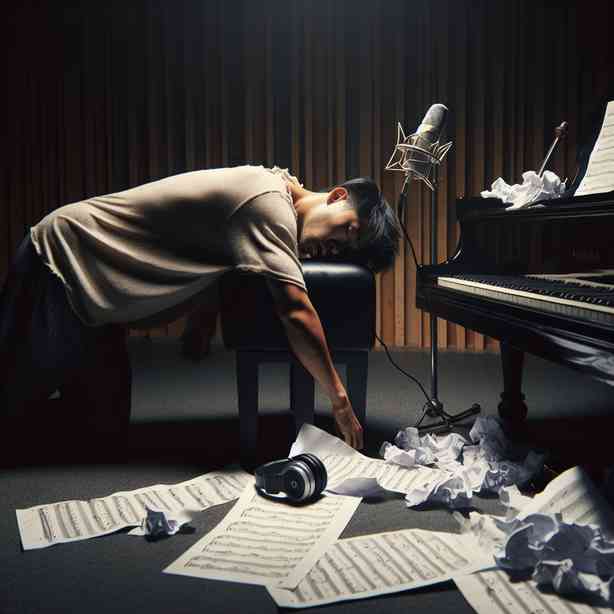
Recording every practice session might seem like a natural step for athletes, musicians, and performers aiming for continuous improvement. However, there are several reasons why this approach may not always be beneficial or necessary. Below, we will explore some key points that explain why recording every practice isn’t always the best choice for optimizing performance and development.
Firstly, the time investment required to record and review every practice can be significant. For individuals with hectic schedules, including students, athletes, or professionals, dedicating time to setup and record can detract from the actual practice time. This reduction in active practice may hinder rather than help skill development. While it is essential to record sessions occasionally to gain feedback, recording every single practice can lead to diminishing returns in terms of the benefits gained from that extra documentation.
Moreover, recording every practice can foster a sense of pressure that may be counterproductive. When individuals know they’re being recorded, they may feel inclined to perform differently, potentially leading to anxiety or self-consciousness. This pressure can inhibit the natural flow of practice, where experimentation and making mistakes are crucial elements of the learning process. The ability to take risks and learn from errors in a low-stakes environment is vital for growth, and constant recording can stifle this necessary exploration.
Another critical consideration is that not every practice session is conducive to productive recording. Some days might be dedicated solely to warm-up routines, physical conditioning, or mental preparation. During these phases, the focus may not be on technical performance or artistry, which are typically the primary interests when reviewing recordings. Therefore, one could argue that recording these sessions would not provide meaningful insights and would simply add unnecessary data that does not contribute to overall performance enhancement.
Furthermore, there is a psychological aspect to consider. Continuous self-recording can lead to over-analysis. When performers repeatedly view their recordings, they may become fixated on minor details, such as pitch accuracy or timing inconsistencies. This can create a mindset focused excessively on flaws rather than fostering self-confidence and enjoyment in the practice process. The emphasis on perfection can lead to burnout and fatigue, particularly when practitioners feel overwhelmed by their perceived shortcomings.
In addition, recording every practice could lead to excessive reliance on technology. While technology can be a powerful tool for learning, it can also divert attention away from the intrinsic elements of art and performance, such as emotional connection and personal expression. A heavy focus on recorded feedback may disrupt a musician’s ability to connect with their piece emotionally, as they become distracted by the mechanics of performance. Finding a balance between utilizing technology and ensuring that the focus remains on artistic expression is vital, and excessive recording may disrupt this equilibrium.
Another compelling reason to limit practice recordings is the amplification of comparison culture. With easy access to recording technology, there’s a temptation to compare oneself to others, especially in online communities or social media platforms. Constantly documenting personal progress can inadvertently lead to unhealthy comparisons with peers or established professionals. This culture of comparison can cultivate feelings of inadequacy, particularly for younger or less experienced individuals, inhibiting their confidence and motivation to pursue their art form.
It’s also worth mentioning that recording can be a valuable tool, but it should be used strategically. Instead of recording every session, practitioners might find it more beneficial to record specific sessions, such as those focused on new material or when significant progress has been made. This approach allows for capturing milestones without overwhelming oneself with excessive footage. By being selective about what to record, individuals can focus on quality over quantity, using recordings as a means to document growth and identify areas that need refining.
From a performance perspective, practicing without the pressure of being recorded may yield better results. It allows for a more organic exploration of the material, which can contribute to a more authentic performance. Athletes, for instance, often train under various conditions to prepare for different scenarios, ensuring they’re not just relying on a specific routine they practiced under recorded conditions.
Finally, striking a healthy balance between practice and recording leads to a more holistic approach to learning. Each practice session is an opportunity to engage with the craft, nurture creativity, and strengthen skills without the constant check of a recording device. Allowing oneself the space to grow and develop at a natural pace can produce more authentic and fulfilling outcomes.
In conclusion, while recording practice sessions can offer valuable feedback and insights, it is essential to recognize that it is not a one-size-fits-all solution. Recording every practice can create undue pressure, lead to over-analysis, and detract from genuine engagement with the craft. Instead, consider using recordings judiciously to enhance the learning experience rather than overwhelm it. By focusing on the journey of growth and cultivating a passion for the art form, individuals can forge a path that is rewarding, fulfilling, and conducive to long-term success. Keep in mind that sometimes, less is more, and allowing yourself the freedom to explore and express can lead to profound discoveries in your practice and performance.


